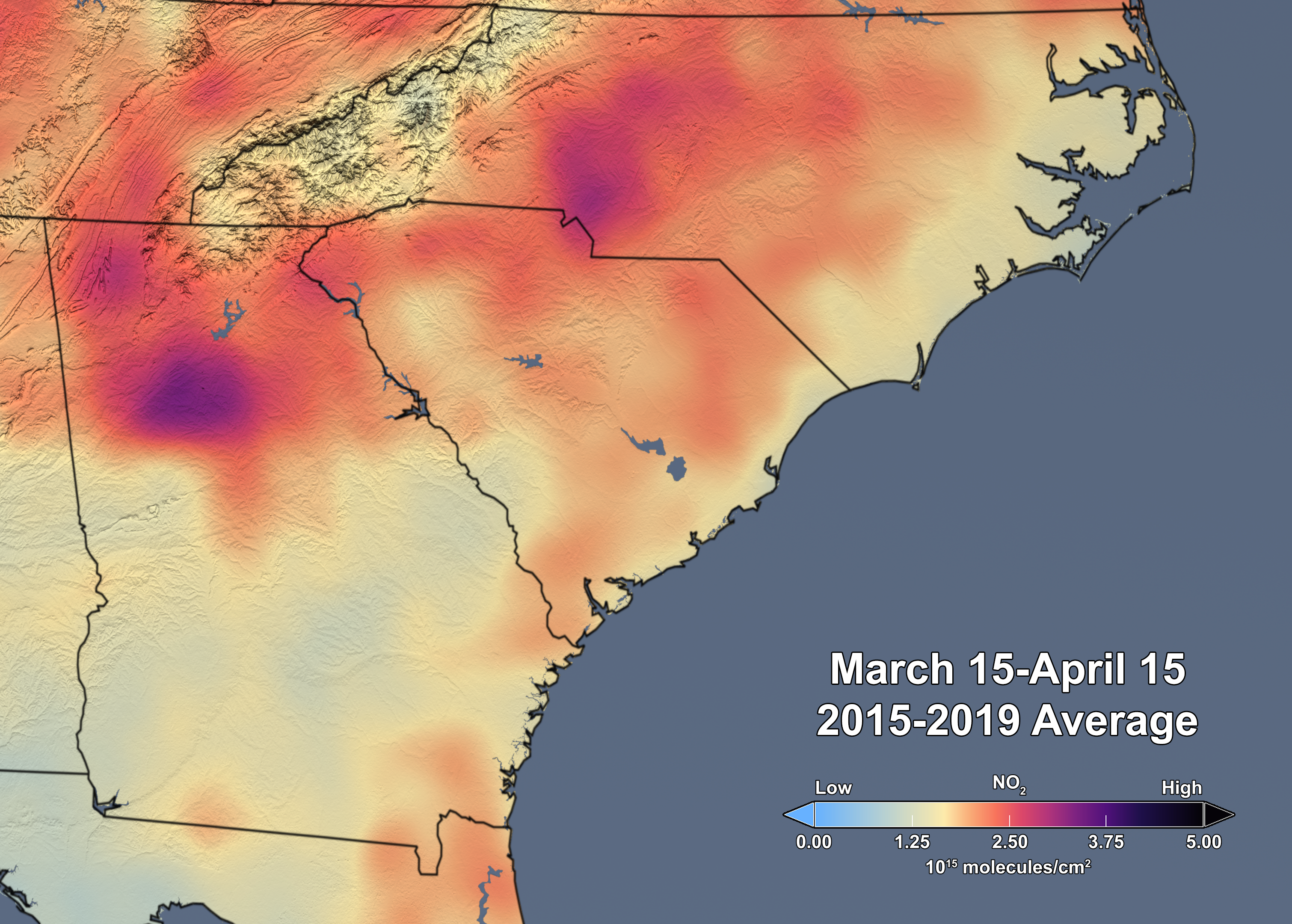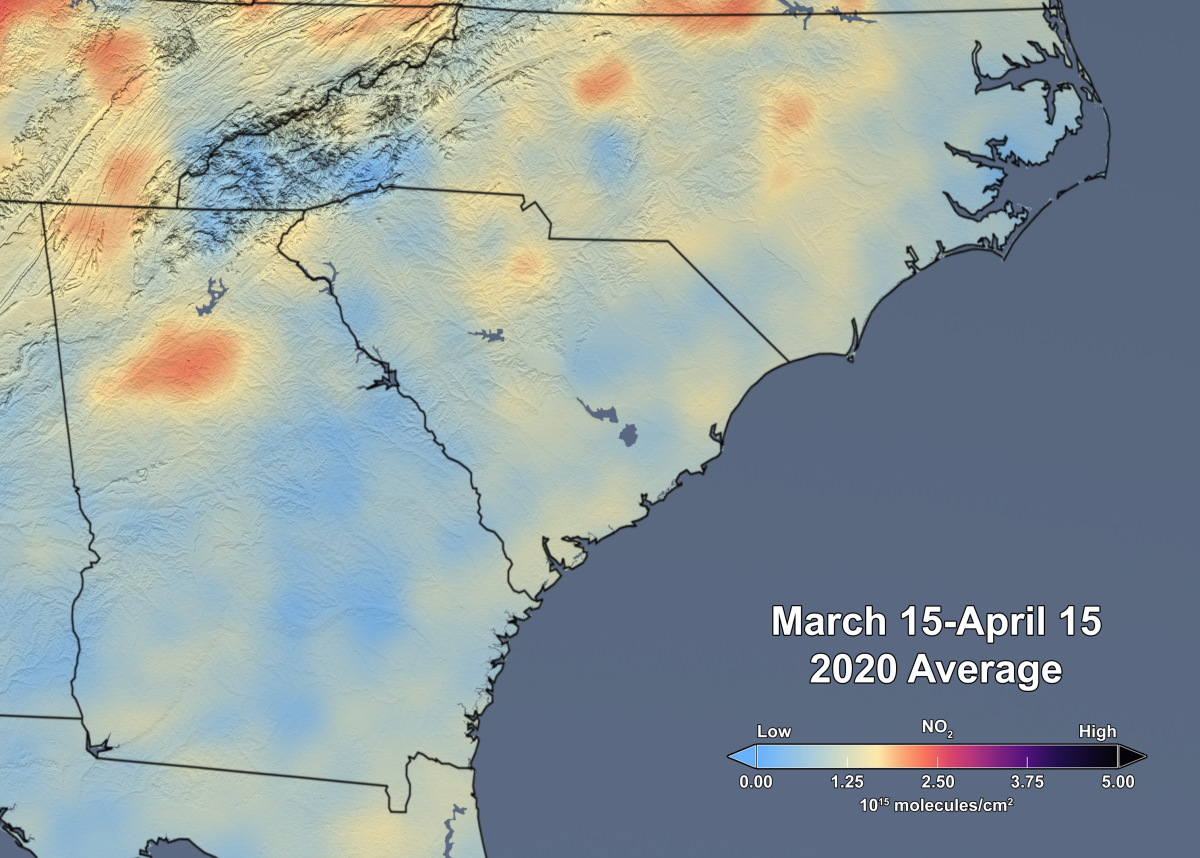

Figure caption: Over the past several weeks, the Southeast U.S. has seen significant reductions in trace gases over many of its major metropolitan areas, such as Atlanta and Charlotte. Similar reductions in trace gases have been observed in the Northeast U.S., Florida, and across the globe. These recent improvements in air quality have come at a high cost, as communities grapple with the widespread stay-at-home advisories that began about a month ago as a result of the spread of COVID-19. Governor Roy Cooper issued a statewide shelter-in-place order for North Carolina on March 27. Other Southeast states followed suit within about a week. The slider above shows satellite data of NO2 from the Aura Ozone Monitoring Instrument (OMI) over the Southeast U.S. as an average of March 15 through April 15. The image on the left shows the mean of the period from 2015 through 2019, while the image on the right shows the mean for 2020. Though variations in weather from year to year cause variations in the monthly means for individual years, the data indicate that the NO2 levels in the last month are about 40% lower over the Southeast U.S. when compared to the mean of 2015 to 2019. In fact, March 15 – April 15 2020 shows the lowest value for the region as compared to any other year during the OMI data record, which spans 2005 to present. The NO2 levels are about 40% lower over Atlanta, Savannah, and Charlotte. Caution: Further analysis is required to rigorously quantify the amount of the change in NO2 levels associated with changes intrace gas emissions versus natural variations in weather. The images are free and publicly-available and may be downloaded. NEW! For technical experts: Global OMI NO2 Monitor.

